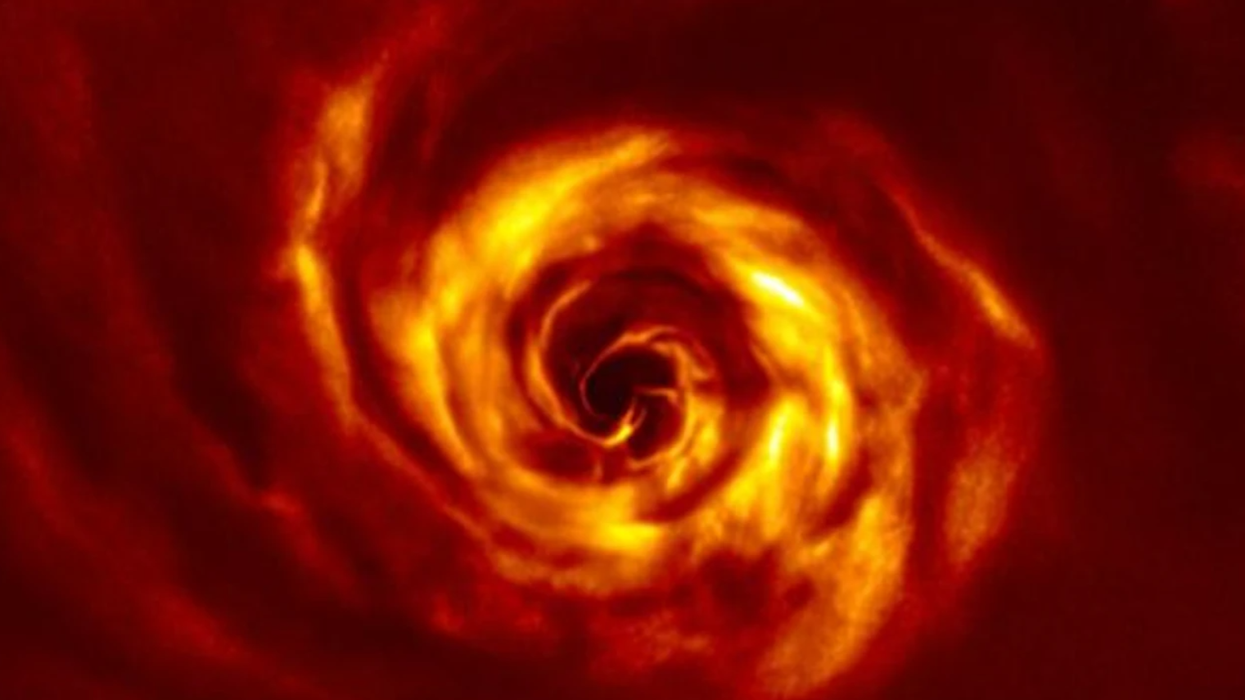Ever wondered if something is completely horrifying or unbelievably beautiful?
That’s the position many people are in when saw images of a planet being born.
According to a study published this week in Astronomy & Astrophysics, these images might be the first direct evidence of what happens at the moment of a planet’s birth, so it’s a pretty big deal.
AB Aurigae, a star located some 520 light years from Earth, has long been of interest to scientists because it is surrounded by a thick ring of gas and dust, creating the ideal conditions for new planets to be born. It’s sort of like a big, space-y womb, waiting for a baby to grow.
A team led by Anthony Boccaletti, an astronomer at the Observatoire de Paris, PSL University, sought out to explore this “space” in space. The result is some of “the most spectacular spirals imaged so far,” according to the new study.
Boccaletti told VICE:
We went to that star because we already knew it was interesting if we wanted to investigate planet formation.
We knew the star was surrounded by gas and dust. In addition to that, we knew the disk had specific structural spirals in a cavity.
So what is “spiralling” and why is it important?
Scientists suspect that a “spiraling” effect is the telltale sign of interactions between potential planets and the gassy dusty material that both surrounds and feeds them. These create wave-like ripples in the gas disk, which then become spiral-like patterns as the planet orbits its star. As the spirals appear, the would-be planet also brings gas into its growing body, scientists think.
Boccaletti said:
In this way, the planet accretes and accumulates the gas and it forms a huge envelope we see in the giant planets in our solar system.
To build these atmospheres of gas, you really need something to bring the gas from somewhere and put it on the planet. This is the process we believe is working for these kinds of planets.
Boccaletti and his team used a specialised instrument called Spectro-Polarimetric High-contrast Exoplanet REsearch (SPHERE), which is located in Chile. SPHERE is designed to look for planets that orbit stars other than the Sun.
These historic images of a planet-in-progress were captured, although the planet itself does not technically appear in these images. It’s more the moment just before the planet appears.
This is a huge deal because the moment before a planet is made (and the process of a planet being created) hasn’t been captured like this before. Discovering key details about how planets are made can help scientists discover future generations of planets and learn more about how planets like Earth were made.
Watch the full video here:
H/T: VICE













